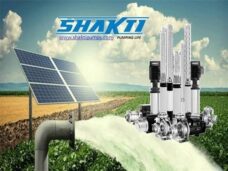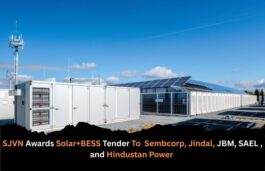Highlights :
- Merida Aerospace found that Gallium Arsenide solar panels, with efficiencies of around 30%, have been the go-to for solar cells in the space solar energy field. Gallium arsenide material exhibits unique semiconductor properties, making it ideal for space applications.
 Perovskite Solar Cells Emerge Alterative To Gallium For Solar Space
Perovskite Solar Cells Emerge Alterative To Gallium For Solar Space Merida Aerospace, a Tampa-based aerospace company, is developing perovskite solar cells tailored for space applications, with a specific emphasis on enhancing performance and economy for low Earth orbit (LEO) satellites.
LEO satellites often rely on solar panels as their primary power source, capturing sunlight during orbital solar exposure for sustained operation. These panels enhance weight efficiency by reducing the need for excessive number of batteries, enabling autonomous function during intermittent access to sunlight while in low earth orbit.
Gallium arsenide solar panels, with efficiencies around 30%, have been the go-to for solar cells in the space solar energy field. Gallium arsenide material exhibits unique semiconductor properties, making it ideal for space applications. However, despite their performance, gallium arsenide solar panels face challenges due to higher manufacturing costs, primarily stemming from the scarcity of gallium and their complex manufacturing process. These cost constraints have prompted researchers and industry experts to explore alternative materials and manufacturing processes to make high-efficiency solar cells more economically viable.
That’s where Perovskite solar cells emerge as a promising alternative, offering distinct advantages over gallium arsenide. Perovskite cells present cost-effectiveness through simplified and economical manufacturing processes. Their flexibility and versatility make the material suitable for diverse applications, from lightweight to bendable solar panels. While gallium arsenide has been synonymous with high efficiency, ongoing research indicates that perovskite cells are rapidly closing the efficiency gap, displaying potential comparable or even higher efficiency levels.
Merida Aerospace, a comprehensive vertical space company, takes pride in manufacturing all components integral to space exploration. From rocket launch motors to satellite components and ground communication systems, Merida Aerospace stands as a one-stop-shop for everything related to space, captured by its motto: “Space of Things – Everything space under one roof.”
Currently, Merida Aerospace’s research engineer, Andrea Marquez is overseeing the developmental project. Andrea states that “Perovskite solar cells have demonstrated remarkable resilience to high-energy radiation in space conditions, thanks to a self-healing effect. Furthermore, the arrangement of perovskite crystals is influenced by space temperatures, enhancing their light absorption capabilities.”
Perovskite solar cells may signify a groundbreaking advancement, due to their efficiency potential and unique optical properties. Their crystalline structure allows optimal light absorption, rivaling or exceeding traditional silicon-based solar cells. Perovskite’s ease of processing through cost-effective methods makes it attractive for lightweight, flexible, and adaptable solar panels. Perovskite technology holds the potential to revolutionize the solar energy landscape.
Recently Lyndsey McMillon-Brown, a NASA research engineer, celebrated the success of a spaceflight demonstration testing perovskite durability on the International Space Station (ISS). After a 10-month exposure, the perovskite film displayed resilience and unexpected restorative properties. This opens exciting possibilities for perovskite in space exploration, challenging previous doubts.
Perovskite solar panels are increasingly being viewed as the potential future of solar cells in fact many professionals in the field see perovskite technology as a possible game-changer due to its combination of high efficiency, versatility in manufacturing, and potential for cost-effectiveness.
Furthermore, the enhanced efficiency and adaptability of perovskite solar cells positions them as a competitive player in the race for more effective renewable energy sources. Perovskite technology may become a mainstream choice for powering residential, commercial, and industrial applications. This shift could redefine the solar industry landscape, moving towards a future where perovskite solar cells play a vital role in meeting the world’s growing energy demands sustainably.
Perovskite solar cells offer environmental benefits, contributing to a sustainable and eco-friendly approach. Their components are abundant and involve a less energy-intensive manufacturing process, aligning with global shifts toward cleaner and sustainable energy technologies.



























